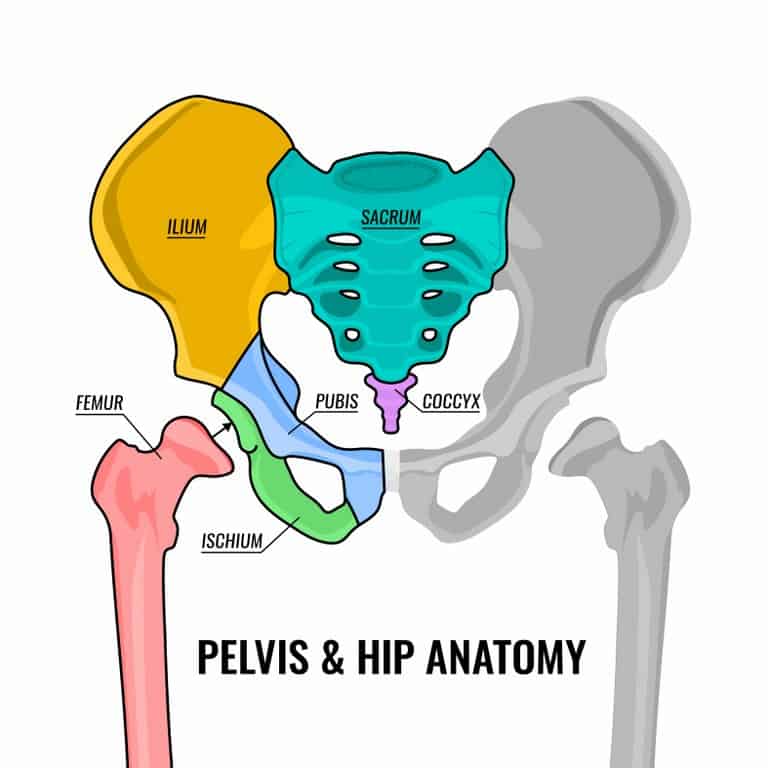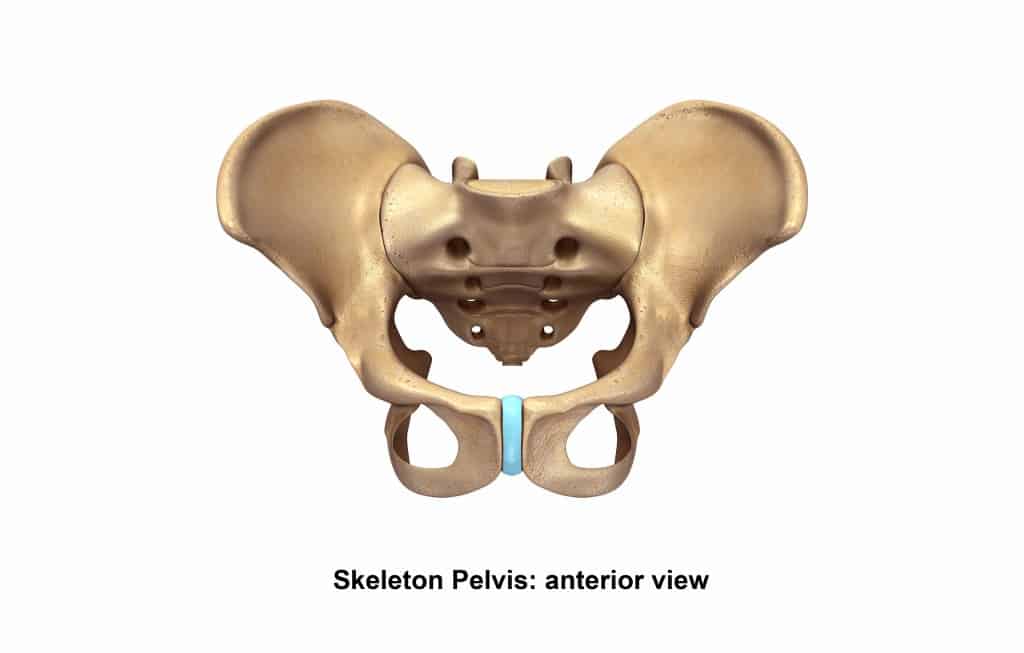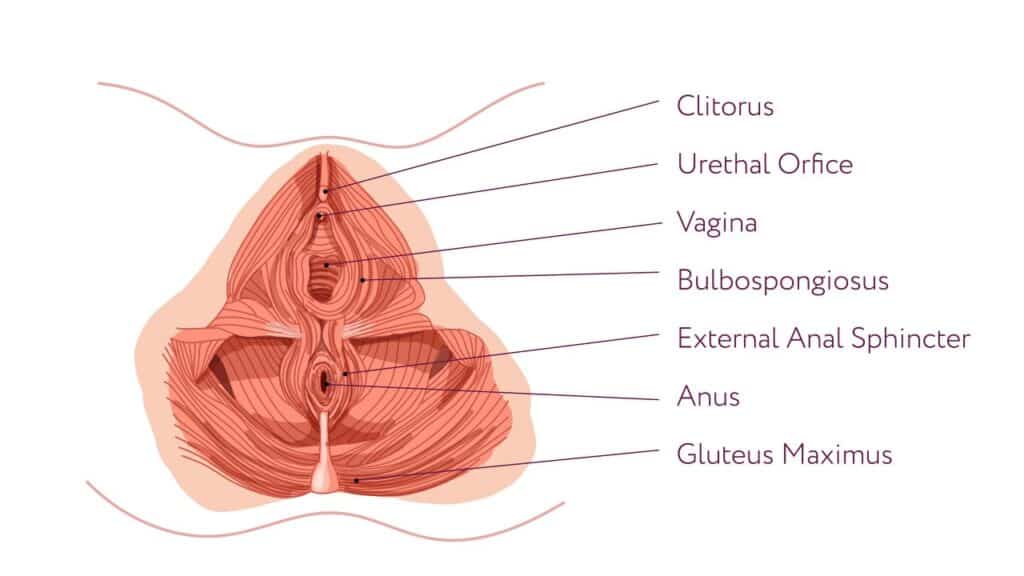Your Pelvis & Pelvic Floor
A Pelvis Primer
It is often taken for granted, yet its strength and form are crucial to our overall health. Your pelvic floor muscles (PFM) are the main support system in your body. Located at the bottom of your pelvis, these muscles offer support for the bladder, uterus, vagina, bowel and anus & baby when you pregnant.
Your pelvic floor muscles are attached to the bony pelvis, and the entire structure is integral in supporting your baby and helping them exit during labor. This is literally the seat of your power.
The first thing we need to do is become familiar with pelvic anatomy & then we will drift down to the pelvic floor.
Your pelvis is not one solid structure. It is a flexible structure, made up of different bones and joints and connected with cartilage to allow movement. Your baby has to navigate your pelvis in labor so knowing how to shapeshift your pelvis with different movements is an amazing labor tool.

It is not one solid structure. It is a flexible structure, made up of different bones and connected with cartilage to allow movement. Your baby has to navigate your pelvis in labor so knowing how to shapeshift your pelvis with different movements is an amazing labor tool.
The first thing we need to do is become familiar with pelvic anatomy.
Parts of the Bony Pelvis
The ilium (yellow) shape the top of the pelvis and are also what we typically call hip bones. Put your hands on your hips to find the top of your pelvic bones, usually located around your waist line. This is the pelvic inlet, where your baby enters your pelvis on their labor journey.
The ischium (green) at the bottom of the structure take most of our weight when we sit. These are also known as sit bones or sitz bones. This is the pelvic outlet, literally where your baby will be exiting after they navigate your pelvis.
It is important to find your sit bones for proper posture during pregnancy instead of sitting on a tucked pelvis. This can possibly help your baby move into an optimal position for labor – help them line up in the inlet with good form.


Pubic Cartilage
The pubis symphysis, is a joint with cartilage where the 2 sides of the pelvis are connected. This connective tissue becomes more relaxed during pregnancy to allow the pelvis more mobility but also can cause less stability and sometimes pain.
Sacrum & Coccyx
The sacrum (blue) is a triangle connected to the lower segment of vertebra and helps take body weight. It is common to feel labor sensations in the sacral area during contractions because your uterus is attached to the sacrum with sturdy ligaments. As the uterus tightens, it can pull on these ligaments.
Your baby’s position can also affect how much pressure you feel against your sacrum. Labor techniques like the sacral squeeze to assist in opening the pelvis or counterpressure to ease discomfort in labor are useful comfort measures.
Your coccyx (purple), also known as your tailbone, is connected to the bottom part of the sacrum. This bone is flexible. It can either be pushed closer towards your pubic bone to make less space in your pelvic outlet or it can be pulled away from the pubic bone to make more space in your outlet.
Pushing positions that allow mobility in the sacrum widen your baby’s exit space in the pelvic outlet.


Pelvic Shapeshifting
Your entire pelvis can change shape depending on how you move your body. Bare Birth Flows explore pelvic shape shifting positions, and teach you helpful movements to use in labor.
Pelvic Floor Layers
The pelvic floor muscles provide support and stability for your entire pelvis and the foundation for the anus, vagina & bladder. Think of a really strong hammock with a few layers to it. The inner layer is interwoven tissue that supports your organs, and the outer layer is comprised of erectile tissue and sphincters – layered in and around your vaginal opening and anus like an infinity symbol.

Pelvic Floor Function
We need integrity in these muscles to aid in sexual functioning and continence throughout life, but especially in pregnancy when they are responsible for holding the weight of your growing baby, stabilizing your pelvis and facilitating birth.
We are talking toned, not tight. A pelvic floor that is too tight can pull on the tail bone and make less exit room for your baby as well as causing dysfunction. A pelvic floor that is too weak cannot support the weight of your growing uterus, stabilize the relaxing pelvis and prevent pee leakage.
Some of you are already well acquainted with your pelvic floors, some may have dabbled in Kegels a bit and some of us might have totally neglected our pelvic core. It is fine wherever you are, it’s never too late to connect with your pelvic floor.


It is a much bigger space than most of us think. We are talking pubic bone to tailbone, hip to hip. That is a lot of muscle!
The perineum is often discussed in labor. That refers to the surface covering to the pelvic floor basically. It is between the anus and the vagina, and it has to stretch when your baby is crowning. This tissue is made to stretch and made to heal. Exploring perineal massage during the later part of the pregnancy can help you become familiar with it and may even decrease tearing in a first birth.
